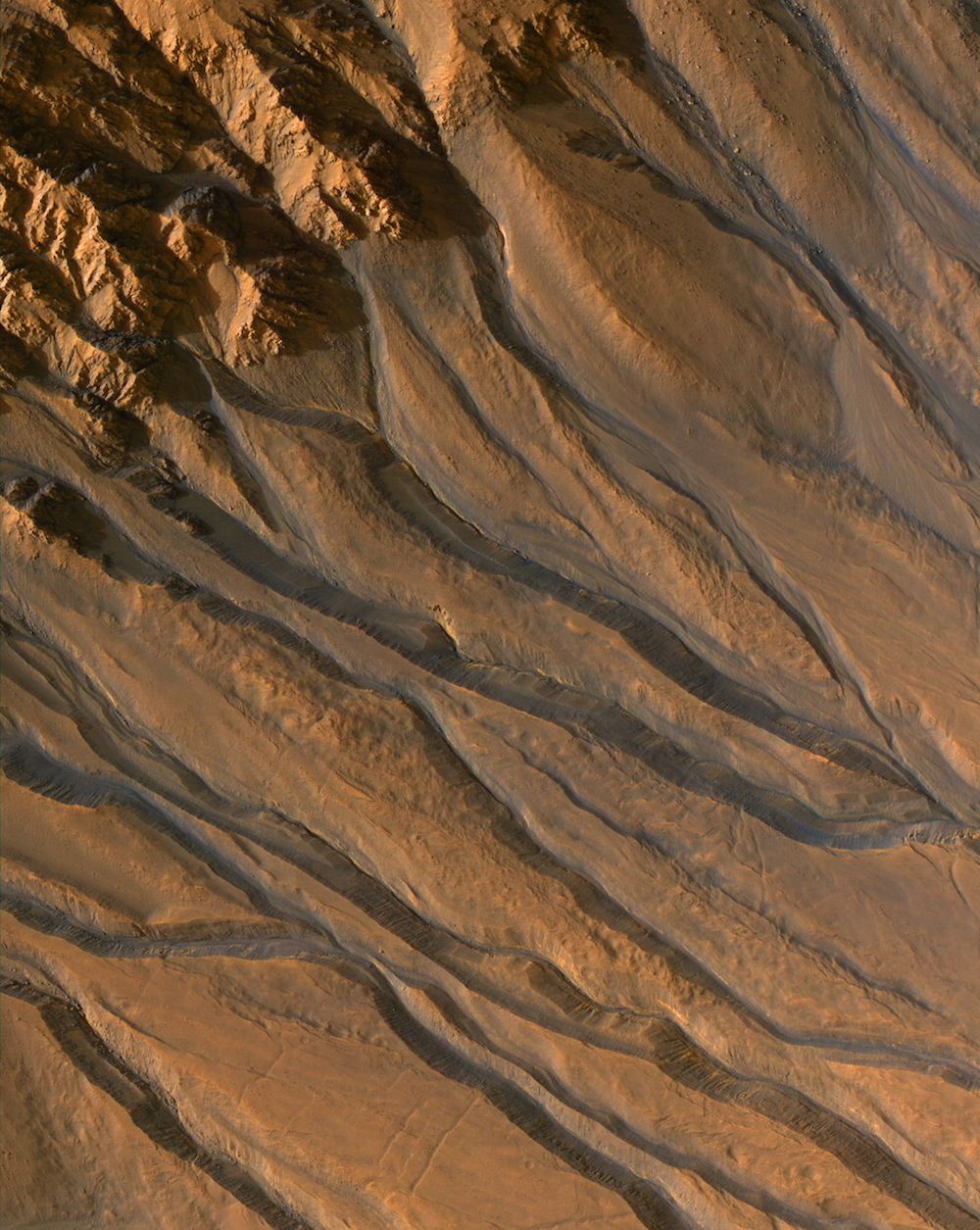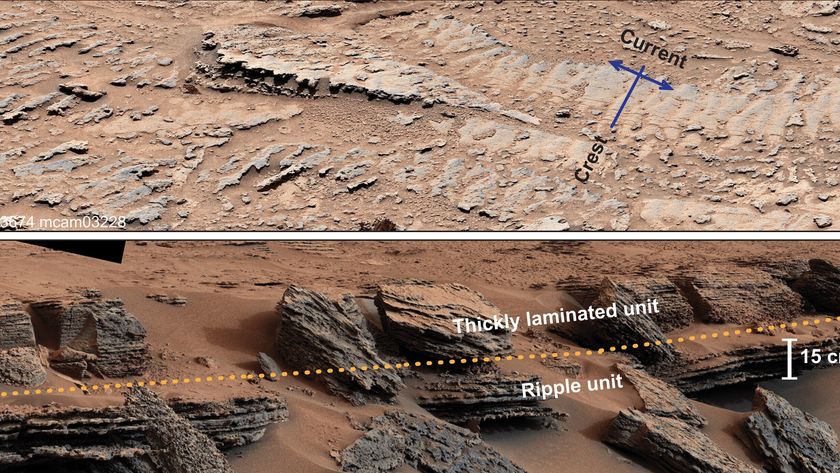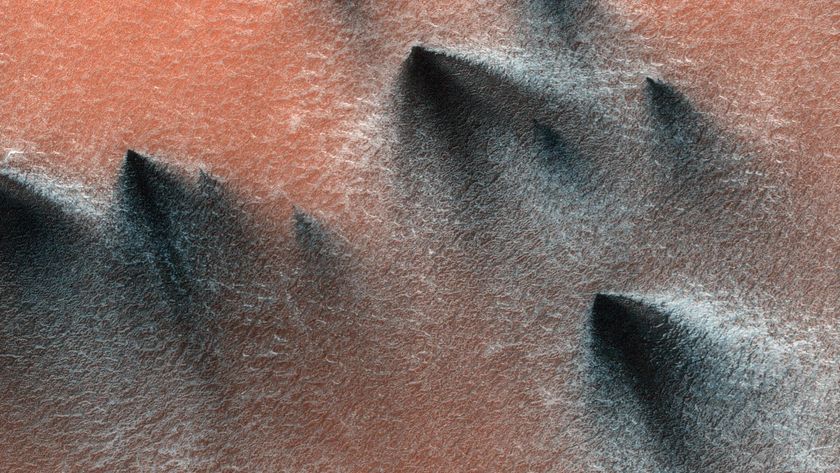Salt on Mars May Have Melted Red Planet's Ice

Water could have flowed on the surface of Mars with the help of salts in the Martian soil that can melt ice, just as salts on Earth can be used to melt ice on slippery winter roads and sidewalks, researchers say.
These findings suggest "the shallow subsurface of Mars could be habitable," study co-author Nilton Rennó, a planetary and atmospheric scientist at the University of Michigan at Ann Arbor, told Live Science.
Liquid water is thought to be an essential ingredient for life as we know it, and there is life virtually wherever there is liquid water on Earth. As such, when researchers search for life elsewhere in the universe, they often look for places that could harbor liquid water. [7 Most Mars-like Places on Earth]
Observations of the Red Planet suggest water once flowed on the surface of Mars, such as the gullies found running down crater rims. In September 2013, NASA's Mars rover Curiosity discovered water locked up in the planet's surface soil. The robotic explorer found that each cubic foot of Martian dirt (0.03 cubic meters) contains about 2 percent water.
"By studying the formation of liquid water on Mars, we can learn about possibilities of life outside Earth and look for resources for future missions," lead study author Erik Fischer, a planetary scientist at the University of Michigan at Ann Arbor, said in a statement.
It has long been a mystery how liquid water could form on the surface of Mars. The Red Planet's atmosphere is both cold and thin, which means water usually freezes on Mars, and is not found in either liquid or vapor form.
However, in 2008, Rennó noticed strange globules in photos sent back by NASA's Phoenix Mars Lander, which operated on the Red Planet from May 2008 to November 2008. Over several weeks, the globules seemed to grow and coalesce.
Sign up for the Live Science daily newsletter now
Get the world’s most fascinating discoveries delivered straight to your inbox.
Rennó suggested these mysterious formations were visible because Phoenix's landing thrusters likely blasted away Martian topsoil, exposing and melting the ice underneath it. Salts on the planet's surface then kept the droplets liquid, because saltwater freezes at lower temperatures than ordinary water does. But the salts on Mars are different from common table salt — technically known as sodium chloride. Martian salts likely include calcium perchlorate, a mixture of calcium, chlorine and oxygen that is found in arid places on Earth, such as the Atacama Desert in Chile.
Still, while salt can help keep water liquid, it is uncertain whether salt can explain the presence of vast amounts of liquid water that research suggests once flowed across Mars. Although salt can help liquid water form by sucking water vapor from the air, this process, called deliquescence, is slow, and cannot explain the volumes of water that once may have covered Mars.
To shed light on the potential role that salt plays on Mars, Fischer, Rennó and their colleagues recreated the Phoenix landing site conditions in their lab in metal cylinders measuring 2 feet (0.6 meters) high and 5 feet (1.5 m) long. The scientists mimicked temperatures in the late Martian spring and early summer, which typically range from minus 185 to minus 5 degrees Fahrenheit (minus 120 to minus 21 degrees Celsius), as well as atmospheric pressure, which is about 1 percent that of Earth's. For most experiments, humidity was set to 100 percent.
The researchers found that in experiments involving only humid air and layers of calcium perchlorate that were only 0.04 inches (1 millimeter) thick, no liquid water formed, even after more than three hours. This suggested deliquescence was not occurring, and is probably not a significant process on Mars, the researchers said. [7 Theories on the Origin of Life]
However, when the scientists placed calcium perchlorate or salty soil directly on a 0.1-inch-thick (3 mm) ice layer, drops of liquid water formed within minutes when the chambers reached minus 100 degrees F (minus 73 C).
These findings reveal that Martian salts can help liquid water form, but only when the salts touch ice. "It takes ice to make liquid water on Mars," Rennó said.
The researchers found that the conditions that support salty water on the Red Planet can last for a few hours per day during late spring and early summer at the polar regions of Mars. "They probably can last weeks per year or even longer in the shallow subsurface at mid-latitudes," Rennó said. "We are talking about the formation of small amounts of liquid water like droplets, not rivers and lakes."
Rennó suggested that saltwater would not have to stay liquid indefinitely for it to support microbial life on Mars now, or in the past. Antarctic saltwater and lattices of brine-filled ice-combs have been found to harbor microbial organisms on Earth.
The most important implication of these findings "is that when looking for signs of liquid water on Mars, it would be good to look at conditions that we have shown in our experiments," Fischer told Live Science.
"Rovers sent to equatorial and low latitudes are not likely to find liquid water because water ice is not stable there on the surface and in the shallow subsurface," Fischer explained. Mid-latitudes and polar regions are the best candidates for liquid water, because both ice and warm enough temperatures are present, "and salts have already been detected by the Phoenix lander," he added.
Fischer, Rennó and their colleagues, Germán Martínez and Harvey Elliott, detailed their findings in a paper accepted for publication June 18 in the journal Geophysical Research Letters.
Follow us @livescience, Facebook & Google+. Original article on Live Science.

Most Popular




